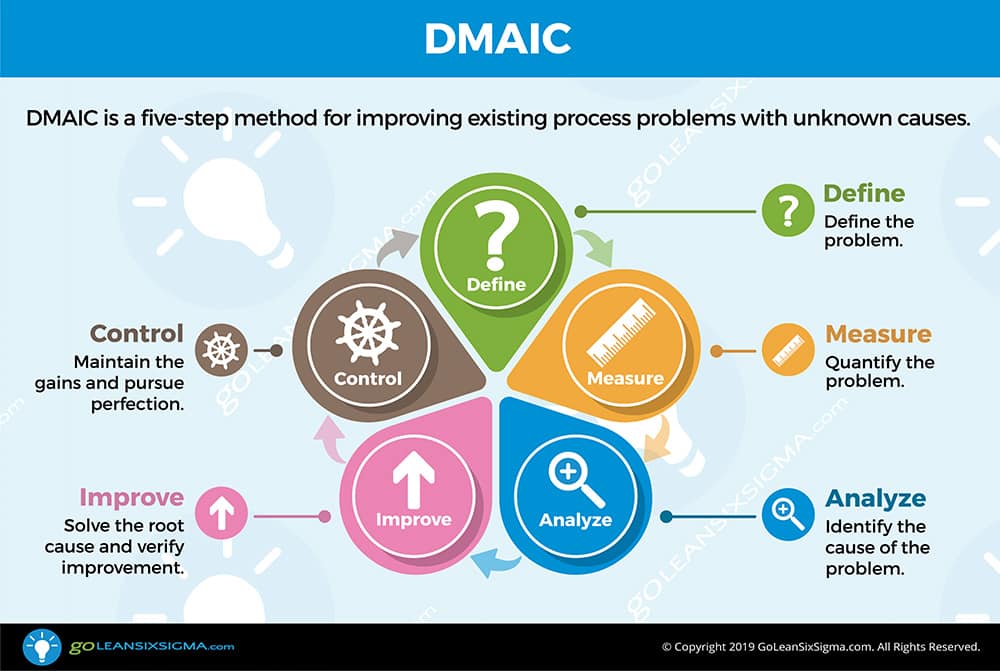

Inside and outside of the public sector, the pressure is growing for lean process improvement and increased quality. The idea has been around for decades. Everybody gets it. Who doesn’t want Government and Education serving us better than last year?
We’re trying! But how do we effectively pursue Continuous Improvement (CI) in the public sector? With the best of intentions and often with herculean effort, public sector organizations have launched improvement efforts only to see their programs slow down and stall.
Maybe you’ve seen this as well. It’s widespread. The problems often cited are “it takes too long,” “It’s overly complicated” or “We don’t have the time; we need results now!”
Well, it doesn’t need to be difficult or take long to get results.
I’m not saying that CI is easy and that you can get results with little or no effort. That’s just not the case. As my grand pappy was fond of saying, “You can’t get heat out of the stove unless you put some wood in it!” Creating a continuous improving organization takes considerable effort.
However, the efforts I’ve seen used in the past were sufficient for success. Plenty of wood in the stove. But the effort was often spent struggling to adopt tools and techniques and consequently not driving results. Even successful projects took much longer than needed.
Adapt vs. Adopt
Adapt versus adopt is the challenge in the public sector because of its unique nature. It’s not a manufacturing organization. Not simply a service organization. Public sector organizations are strongly mission driven stewards of taxpayer resources that supply vital services to the community.
The Public sector needs to adapt Continuous Improvement (CI) methods to fit their unique organization and culture. There is a simple and universal approach to this adaption that I have seen used across a variety of industries.
I think myself and other practitioners often inadvertently make this “stuff” seem complicated.
There is a tendency to focus on the tools. In our zeal to talk about all the things that can be and are done to get amazing results we can make the subject matter dense and disjointed.
At GoLeanSixSigma.com, our mission is to help people and organizations develop their problem solving “muscles.” We believe that Continuous Improvement should be fun, logical and, dare I say it, easy. The problems we are trying to solve are difficult enough without the methods we are trying to use being even more so. Let’s talk about an approach to drive deeper understanding of the logic of CI without the added complexity of tools and procedures.
Fundamental Principles of Continuous Improvement
First, we need to start with the fundamental principles of CI. These are the foundation for developing improvement capabilities within any organization. How we put them to use may vary by sector, however. If we start with the basic understanding of the principles, then we are laying a foundation to build upon and adapt as we move forward.
The foundational principles are:
- Customer Focus
- Process Focus
- Respect for People
- Decision Based on Facts
- Systematic Approach to Improvement
- Engaged Leadership
Who would be against this? No one. You may even ask, “Aren’t we doing this already?”
Most organizations agree with these principles and are making efforts to put them into practice. However, we are talking about the challenge getting better and faster at improving what we do in order to drive rapid success. If we are too busy trying to learn a complicated approach, then we may not be able to keep up.
Implementing an Improvement Project
To move from these principles to getting results, let’s discuss how to implement an improvement project. The CI body of knowledge contains numerous tools to help us solve problems. The challenge with so much information is that a new practitioner can find themselves so close to the trees that not only is the forest unseen, but they have bark in their teeth!
The effort to apply the tools can obscure the reason for their application. We could easily find ourselves implementing tools for tools sake. If you add to this the need to adapt to the unique needs of the organization then it is any wonder how any progress is made. If so, it is often by tremendous effort and heroics.
Let’s start with a simpler approach to provide a framework and a perspective, a view of the forest. Answering 6 key questions can lead from problems to sustainable solutions.
To begin the development of the problem solving muscles, let’s start with basic conditioning. A simple repeatable routine that will drive success and become stronger with practice. The following simple questions form the sequence of steps in an improvement effort.
- What problem are we trying to solve?
- How will we know the situation has improved?
- What is causing the problem?
- What are the best solutions to the problem?
- What are the results from the improvements?
- How can we maintain the improvements?
Success requires that we answer these questions with the CI principles as a to guide. Any tools used are applied such that we can answer the questions with a reasonable amount of certainty.
Ask yourself, “What do I need to learn to answer this question and what tools will facilitate this learning?” The focus is on the knowledge needed and not the tool.
You may be familiar with many of the excellent process improvement methodologies in use.
DMAIC
DMAIC (Define, Measure, Analyze, Improve, Control), is one of the most widely used in Lean Six Sigma and Operational Excellence. The DMAIC methodology and the 6 Key Question match in this way.


- DEFINE: What problem are we trying to solve?
- MEASURE: How will we know the situation has improved?
- ANALYZE: What is causing the problem?
- IMPROVE: What are the best solutions to the problem? 5. What are the results from the improvements?
- CONTROL: How can we maintain the improvements?
I am not trying to suggest that you do not need the tools, data and the structure of DMAIC to effectively improve processes. I am suggesting that the simple logic and sequence of these questions are embedded in DMAIC and other improvement methodologies. However, they can get lost while we struggle to create deliverables, apply tools and crunch the data.
These simple questions are the guide to help us take the most effective route through the improvement journey.
Let’s walk thorough an actual improvement story to illustrate the logic.
Project Example Walkthrough
This is an improvement story from a city government office that reduced payment processing errors by 88%.
What problem are we trying to solve?
Staff are complaining about the numerous cash balance variances in payment reconciliation, the time it takes to resolve these variances each month. Also, customers are complaining about the delays in processing.
How will we know the situation has improved?
We average 8 variances per month in our payment reconciliation process with an average of 3 hours per month to resolve. This results in long delays for customers and a painful experience for the staff. Improvement should result in significant reduction in the number of variance and the time to resolve.
What is causing the problem?
An improvement team discovered a “glitch” in the IT system that caused certain orders not to appear in the payment systems. Also, staff had differing methods of using the payment system and to investigate discrepancies. And lastly, the reconciliation process took too long and led to additional errors.
What are the best solutions to the problem?
First, the team streamlined the reconciliation process. The team also addressed the root cause within the IT system that caused the discrepancy and eliminated those from happening. Then the IT team trained all cashiers and supervisors on the new process and how to properly use the payment system.
What are the results from the improvements?
Variances decreased from 8 to 1 discrepancy per month, 88%. Discrepancies addressed in just 10 minutes instead of 3 hours, saving them almost 900 hours of labor a year
How can we maintain the improvements?
Maintaining the training in the new standard process as changeover in staff occurred. While continuing to monitor the number of discrepancies. If they begin to increase we will investigate and resolve.
In hindsight this story can seem simple and obvious. However, it is during the process of investigation and discovery that you are not sure where the answers to the questions will take you. How the story will end.
A disciplined application of these questions in sequence will save time and avoid costly mistakes, leading to a successful project. This success builds the capability to repeat similar improvement efforts and leads to development of best practices within an organization. Best practices that everyone can replicate.
I have found the use of this framework to be an excellent way to organize the DMAIC tools and methods to help new project leaders be successful in their first project. Keeping the questions in mind helps build focus, confidence and your problem solving muscles.
Benefits of Improving Process in Government and Education
The improvement story outlined above is one of many we have documented on our website. All follow DMAIC, including ample data and tools, and tell successful improvement stories from a variety of industries. Some of the projects from Government and Education include:
In Government:
- Reducing late fees
- Improving pothole repair
- Procurement lead time reduction
- Supplier set-up time
- Improving project initiation time
In Education:
- Employee onboarding
- Reducing activity planning lead time
- Repurposing transportation time
- Reducing classroom incidents
Start Your Continuous Improvement Today!
So how do you get started adopting Continuous Improvement to your public sector organization? Here are a few suggestions.
- Review success stories of interest on our website.
- Visit an organization similar to yours to see CI in action.
- Pick a few meaningful projects in our organization. Start with a few. You can always speed up if you start small, but it is hard to correct if you go too big too fast. You are learning how to adapt the approach first, speed comes later.
- Select strong project leaders and train them in process improvement. Remind them to use the 6 questions to guide them through the training.
- Coach and support your project leaders. Conduct regular progress reviews and use the 6 questions to guide the discussion. Each project should provide fact based, process focused and customer minded answers to the questions.
As you continue the journey in this way you will further develop the muscles of problem solving. As your capability increases you will discover how to adapt and customize CI to your public sector organization, accelerating results.
Let me know your comments or questions. If you would like assistance in getting started with Continuous Improvement, you can reach me at [email protected].
Please also leave a comment below if you’d like to share any of your tips for helping Public Sector organizations like Government or Education improve their Process Improvement or Quality efforts.






















































